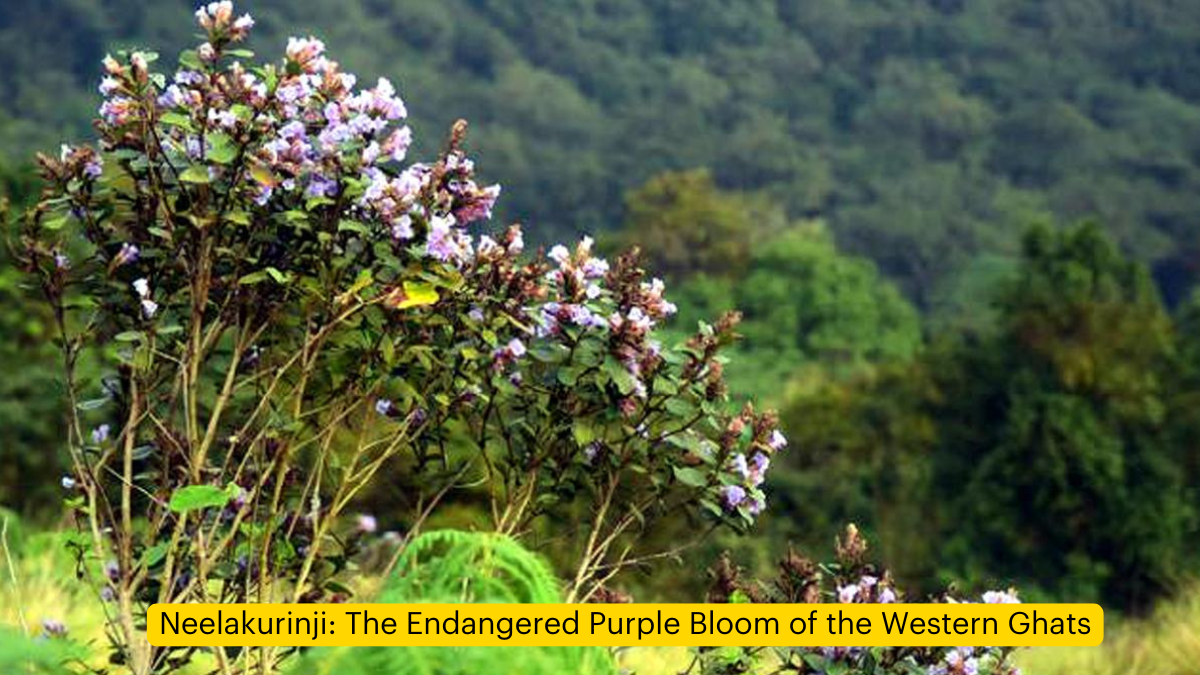The Neelakurinji (Strobilanthes kunthiana), a remarkable flowering shrub native to the montane grasslands of southwest India, has recently been added to the International Union for Conservation of Nature (IUCN) Red List of Threatened Species. This iconic plant, known for its mass blooming once every 12 years, has been classified as Vulnerable according to the IUCN criteria.
The IUCN Red List Assessment
First Global Evaluation
This marks the first time Strobilanthes kunthiana has undergone a Global Red List assessment. The evaluation was conducted by:
- Dr. Amitha Bachan K.H.
- Devika M. Anilkumar
Both researchers are affiliated with the Centre for Ecology Taxonomy Conservation and Climate Change (CEtC) of the Western Ghats Hornbill Foundation at the Research Department of Botany, MES Asmabi College, Kodungalloor.
The assessment was reviewed by Aparna Watwe of the Western Ghats Plant Specialist Group, ensuring a thorough and credible evaluation process.
Challenges in Assessment
Dr. Bachan noted several factors that had previously hindered a comprehensive assessment:
- The species’ distribution across montane sky island landscapes in the Western Ghats
- Its unique 12-year blooming cycle
- A lack of in-depth ecological studies
Neelakurinji: A Botanical Marvel
Species Characteristics
Strobilanthes kunthiana is an endemic shrub with distinct features:
- Grows up to three meters in height
- Found exclusively in high-altitude shola grassland ecosystems
- Occurs in five mountain landscapes of southwest India
- Thrives at elevations between 1,340 and 2,600 meters
Blooming Phenomenon
The Neelakurinji is renowned for its spectacular mass blooming:
- Flowers once every 12 years
- Creates a stunning purplish-blue landscape
- Semelparous life cycle (blooms once before dying)
- Synchronous blooming and fruiting at the end of its life cycle
- Blooming patterns have been documented since 1832
Threats to Neelakurinji
Habitat Loss and Degradation
The primary threats to Neelakurinji stem from human activities:
- Conversion of natural habitats: Approximately 40% of its habitat has been lost to:
- Tea plantations
- Softwood plantations
- Urbanization
- Invasive species: Remaining habitats are under pressure from exotic species such as:
- Eucalyptus
- Black wattle
- Infrastructure development: Ongoing construction projects in its native range
- Misguided conservation efforts: Afforestation programs that disrupt natural grassland ecosystems
- Climate change: Altering the delicate montane ecosystem
Distribution and Population
Geographic Range
The Neelakurinji has a limited but significant distribution:
- Area of occupancy: 220 square kilometers
- Extent of occurrence: 25,510 square kilometers
- Subpopulations: 34 in total
- 33 in the Western Ghats
- 1 in the Eastern Ghats (Yercaud, Shevaroy Hills)
Key Habitats
The species is primarily found in:
- The Nilgiris of Tamil Nadu (largest concentration)
- Munnar region
- Palani-Kodaikanal area
- Anamalai mountains
Conservation Implications
The inclusion of Neelakurinji on the IUCN Red List highlights the urgent need for conservation efforts. Its Vulnerable status (Criteria A2c) indicates a population reduction of at least 30% over the last three generations, based on a decline in area of occupancy, extent of occurrence, and habitat quality.




 Bhartiya Bhasha Utsav 2025: Celebrating ...
Bhartiya Bhasha Utsav 2025: Celebrating ...
 Starlink Internet: Revolutionising Globa...
Starlink Internet: Revolutionising Globa...
 Google 2025: Top Searches by Indian User...
Google 2025: Top Searches by Indian User...







